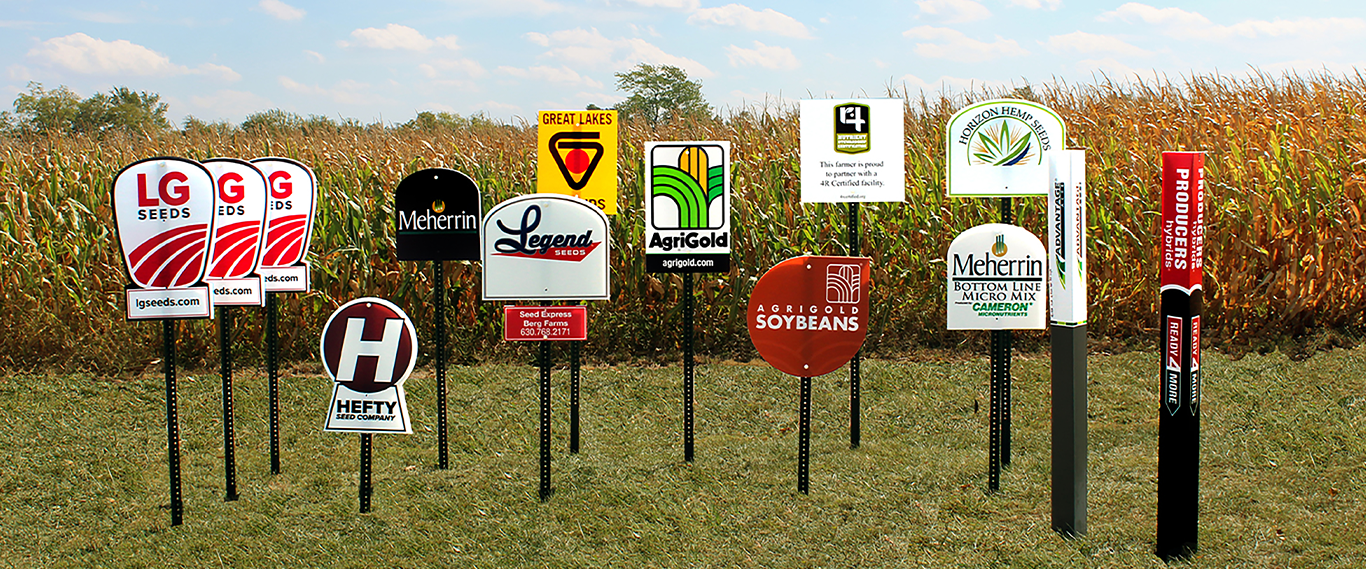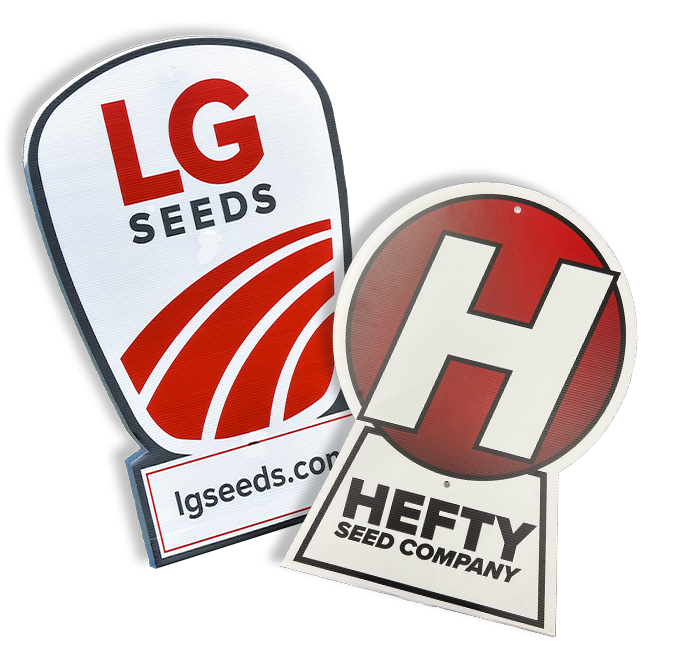CULTIVATING SUCCESS: The Role of Farming and Seed Field Signage in Growth and Innovation
In the heart of agriculture, where every seed planted holds the promise of a thriving harvest, the importance of effective signage and labeling cannot be overstated. As technology continues to reshape the farming landscape, incorporating advanced solutions into the field is essential for streamlining processes and optimizing yields. Let’s explore the transformative role of farming and seed field signage and labeling in the world of agriculture.

- Precision Agriculture Unveiled:
In the era of precision agriculture, every detail matters. Farming signage is no longer just a marker; it’s a data point, guiding farmers with crucial information about seed types, planting dates, and optimal conditions. Smart field signage integrates with precision agriculture technologies, enabling farmers to make data-driven decisions for efficient resource allocation.
- Nurturing Growth with Seed Field Signage:
Signage in seed fields is more than just a label; it’s a blueprint for success. Clearly marked rows and organized plots enhance navigation and reduce the risk of errors during planting and harvesting. With accurate signage, farmers can ensure that each crop receives the right care, from irrigation schedules to pest control measures.
- Technology Meets Tradition:
Incorporating technology into field signage brings a modern touch to traditional farming practices. RFID-enabled labels and QR codes on seed packets provide instant access to detailed information about seed varieties, recommended planting practices, and even traceability data. This seamless integration fosters a harmonious blend of technology and age-old agricultural wisdom.
- Sustainability at the Forefront:
In the pursuit of sustainable agriculture, eco-friendly and durable signage materials are gaining prominence. Biodegradable labels and reusable signage contribute to reducing environmental impact, aligning farming practices with the global call for sustainability. These initiatives not only benefit the planet but also resonate positively with consumers who prioritize eco-conscious products.
- Enhancing Communication in Agricultural Networks:
Effective communication within the agricultural ecosystem is vital for success. Signage acts as a silent communicator, conveying critical information to farmworkers, suppliers, and stakeholders. From crop rotation schedules to safety guidelines, well-designed signage fosters a collaborative and informed farming community.
- Compliance and Regulation:
Navigating the complexities of agricultural regulations is a challenge for farmers. Proper signage that complies with regional and industry standards simplifies the regulatory landscape. Whether it’s indicating GMO-free zones or meeting organic certification requirements, well-labeled fields help farmers stay compliant and build trust with consumers.
- Branding the Harvest:
In a world where consumers are increasingly interested in the origin of their food, branded signage becomes a powerful tool. Personalized labels and signage not only create a visual identity for the farm but also establish a direct connection between farmers and consumers. This branding strategy contributes to consumer loyalty and market differentiation.
In conclusion, the synergy between farming and seed field signage and labeling is a cornerstone of modern agriculture.

From precision farming to sustainable practices and effective communication, the role of signage goes beyond mere markers—it’s a catalyst for growth, innovation, and a sustainable future for agriculture.
As farmers continue to embrace technology and eco-conscious practices, the humble field sign emerges as a beacon guiding the way toward a bountiful and sustainable harvest.(flexpack.org)
